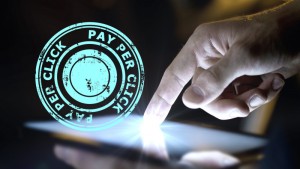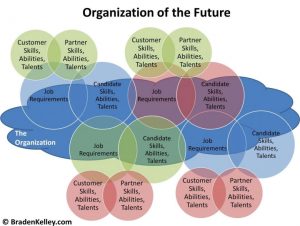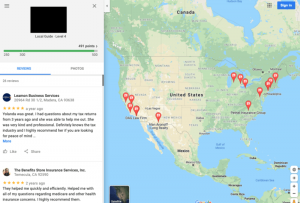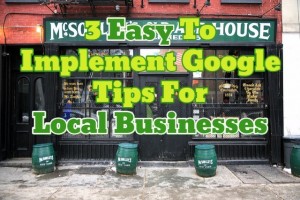In my content marketing role at GRIN, I and my team have a front-row seat to industry developments – and they’re happening fast.
Speculating on the future of influencer marketing is no longer a discussion for marketing elites. DTC brands, in particular, are gathering tools and techniques to simply keep up with social commerce trends, not the least of which is the marketing power of this growing content creator world.

- Statista Research Department, 2021
“In 2021, 67.9 percent of U.S. marketers in companies larger than 100 employees were expected to use influencers for marketing purposes. – Statista Research Department, January 2021
Is It Influencer Marketing or Customer Advocacy or Affiliate Marketing?
Even though influencer marketing as we know it is a recent phenomenon, the concept of celebrity endorsements is not new. But with today’s analytics, marketers can see the enormous benefits of niche gurus, influential customer shoutouts, social media creators, and more.
As often happens in the marketing trenches of an evolving medium, terms are starting to merge and differentiate. What do brands mean when they use labels like “ambassador,” “affiliate,” or “influencer”?
We can insist upon dictionary definitions, but those will fail us in the wake of change. Nevertheless, there are some high-level characteristics that allow me and my peers to distinguish among these terms.
Influencer Marketing
The term that seems most broad is that of “influencer.”
Influencers take many forms, from celebrities who endorse select organizations to mommy bloggers who share coupon codes. If there is one term that seems safest when describing social media power users that maintain thriving online communities, it’s the term “influencer.”
But if you’re a marketing manager working with content creators, “influencer marketing” may not be specific enough to your program’s mission, values, and goals.
Customer Advocacy
Customer advocacy programs often include influencers, but they certainly don’t have to. When brands recruit influencers into their advocacy communities, they’re more likely to refer to them as “ambassadors.”
As a whole, customer advocates are loyal customers that want to spread the word about the products that they love. Many of these customers are also influential on social media, and as a result, their word-of-mouth efforts easily fall within the umbrella of influencer marketing.
Affiliate Marketing
For many decades now, it’s made sense for some brands to outsource a portion of their sales to affiliates. Traditionally, affiliates are industry experts with a thriving publication channel and hefty conversion skills.
Though often falling on the “salesy” side of the influencer spectrum, affiliates typically demonstrate admirable content creation standards. They can attract prospects and guide them towards their purchase.
Many influencers and brand ambassadors assume an affiliate role with their favorite brands. This development is great news for everyone involved because creators get to monetize their audience, and brands enjoy more authentic brand mentions from affiliates.
As such, the occasional overlap between affiliate and influencer marketing has effectively raised the bar for sales authenticity on social media. Consumers don’t seem to mind the overt calls-to-action, so long as the influencer’s brand affinity is genuine, and consumers can see a healthy mix of branded and non-branded content on that influencer’s profile.
Top Industries for Influencer Marketing
Initially, influencer marketing was primarily a go-to strategy for young DTC, eCommerce brands. But now, major manufacturers and distributors are finding ways to leverage influencers and support retail partnerships.
But as eCommerce grows, so do all the ways that brands choose to leverage social media creators for awareness and sales. Among the leading industries for influencer marketing currently are:
- Fashion
- Health, wellness, nutrition, fitness, etc.
- DIY
- Travel
- Gaming (eSports)
- Entertainment and media streaming
Emerging Landscapes for Influencer Marketing
As SaaS solutions demonstrate better influencer attribution (that is, tracking which influencers are responsible for brand revenue, lead generation, and web traffic), more industries are jumping on board, including:
- B2B brands
- Mobile apps
- Nonprofit organizations
- Public works projects and government agencies
What are Influencers Worth? Comparing Costs and Value
Influencer worth is a hot topic these days, not because it’s debatable whether influencer marketing works, but because marketers keep discovering new ways in which influencers generate returns.
Simultaneously, social creators are coming to terms with their worth. Equitable pay for influencers is a growing movement as brands move away from traditional (and costly) ad and content design.
The most popular influencer performance metrics are:
- Influencer media value
- Reach
- Content
- Engagement
- Conversions
Influencer Media Value
Influencer media value, or IMV, is the influencer expression of earned media value (EMV).
“IMV should demonstrate a comparable ROI to paid media. For example, an IMV of $ 100 indicates that your influencer marketing results generated what you could expect to achieve by spending $ 100 on digital ads. If you spent less than $ 100 on that particular influencer campaign, then you’ve achieved a positive ROI and better results than if you had spent those dollars on ads.” – GRIN, Quick Guide to Earned Media Value & Influencer Media Value
There are various formulas for calculating IMV. But the end goal is for marketers to understand what a particular influencer’s post is worth, based on that influencer’s engagement and relationship with their audience.
Influencers with a higher IMV generally produce more valuable engagement per post on behalf of their brand partnerships. This value also helps brands budget for their influencer campaigns.
Influencer Reach and Brand Awareness
Brand awareness is often the most-cited reason for collaborating with influencers. As a result, influencer reach becomes a critical metric.
A creator’s reach usually matches their follower count. That’s why marketers categorize influencers by how many followers they have, as such:
- Nano – 1,000-10,000 followers
- Micro – 10,000-100,000 followers
- Macro – 100,000-1 million followers
- Mega/Celebrity – 1 million followers or more
When calculating influencer reach, brands are increasingly aware of the imposters, known affectionately as fake influencers – users who buy followers and engagements to appear more valuable to brands. But thanks to updates on social media platforms and influencer credibility tools, it’s becoming much easier to weed out these fake influencers.
Still, costs generally increase with an influencer’s reach. And it’s up to the brand to verify whether that creator’s audience is truly engaged.
Influencer Content Creation
Brands are beginning to see the merits of outsourcing social media content creation to their influencers. It saves production costs, is more authentic, and helps the brand build a library of repurpose-able content for ads.
“A creator is a production company in a box… Because they are partnering with a creator, a brand doesn’t have to go out there and hire a production company or hire an agency or hire actors to star in content. There is a lot of value that the creator brings.” – Justin Moore, Founder & CEO of Creator Wizard
Content volume metrics ensure that brands achieve a sufficient amount of IRL (in real life) content to showcase their products, as well as provide informal FAQs and case uses. Consumers favor this content because it comes from a lifestyle expert that they trust and want to emulate.
When factoring in the cost for these content creators, brands often test the quality of an influencer’s creative skills in a one-off or product gifting campaign. After a couple of mutually beneficial partnerships, the brand and creator negotiate rates for an extended contract.
Influencer Engagement
Engagement is the single most often tracked campaign metric in all of influencer marketing. Meaningful interactions between influencers and their followers facilitate ongoing user-generated content from followers and fans. And with each new engagement, brand mentions can increase the number of impressions per post.
This online chatter often translates into increased brand awareness, sales, website traffic, and new followers on that social media channel.
As influencer attribution and social listening technology advances, marketers are even able to distinguish between the value of vanity metrics (followers and likes) and non-vanity metrics (comments, shares, duets, etc.).
Conversions
For smaller influencer and ambassador programs still using manual tracking tools, conversions through affiliate links and discount codes are the easiest metrics to follow. Conversion-based partnerships often result in commission influencer payments to incentivize performance.
The robust conversion power of influencer marketing is quite high. In a recent case study from MuteSix, Snibbs shoe company was able to leverage a team of influencers to generate more than $ 200,000 in sales during a March 2020 campaign.
Thanks to updated social commerce features on Pinterest and Instagram/Facebook, it’s getting easier for influencers to tag their favorite products and direct their followers to fast checkout.
Types of Influencers
Nano and Micro Influencers
In the wake of better engagement and credibility tools, evaluating a creator based solely on their follower count is quickly losing steam. That said, an influencer’s reach can accurately reflect cost and effectiveness. From an ROI standpoint, it often makes sense for brands to pay more attention to influencers with smaller audiences.
For brands looking to increase conversions, nano and micro influencers are among the most successful. These creators maintain deeper relationships with their followers, and their communities are usually more niche.
Macro and Mega Influencers
Once a creator’s fan base reaches a million or more followers, brands can often count on achieving a higher reach and wider brand awareness. But these macro and mega influencer campaigns come at a much greater cost.
As a result, brands targeting these influencers are more likely to pay significant per post rates or retainer fees for the duration of a campaign or event.
Brand Ambassadors
Brand ambassadors can involve nano, micro, or even macro influencers, as well as social media power users with fewer than 1,000 followers. But what they all have in common is high brand affinity and a certain level of exclusivity.
In other words, these creators promote the brand out of customer loyalty rather than out of a desire to make money (even though most ambassadors today enjoy commissions on attributed sales). For this reason, many brand ambassadors work day jobs, have their own businesses, or create “on the side.”
Celebrity Collaborations
When Nike joined forces with Michael Jordan in 1984, they scaled their business on the contractual endorsement from one of the greatest athletes in history. These brand-celebrity partnerships continue today.
But we are seeing a higher level of collaboration between brands and celebrities. For example, product lines named after a celebrity often indicate that that individual consulted on product design or invested their own resources to launch the brand. Mission Apparel is a prime example of this approach.
Some industry thought leaders, such as Gary V and Brene Brown, have also achieved celebrity status on social media and may strategically partner with or mention brands with whom their values align.
Celebrity Social Entrepreneurs
The 21st Century has seen an uptick in celebrities launching brands of their own and leveraging social media to build brand awareness and monetize their celebrity status. This trend is fascinating – we see accomplished actors, musicians, and athletes mimic the approach of everyday creators to delight audiences and promote their business ventures.
Final Thoughts
Influencer marketing is no longer in its infancy. Creator management solutions and attribution tools are catching up to demand. More importantly, recent developments in influencer campaign management demonstrate that influencer ROI is more extensive than experts previously thought.
Thanks to creator ingenuity, the authenticity standard in digital marketing is higher than it’s ever been. Brands that hesitate to collaborate with their influential customers may soon find themselves out of touch with the next generation of consumers.
Digital & Social Articles on Business 2 Community
(59)






